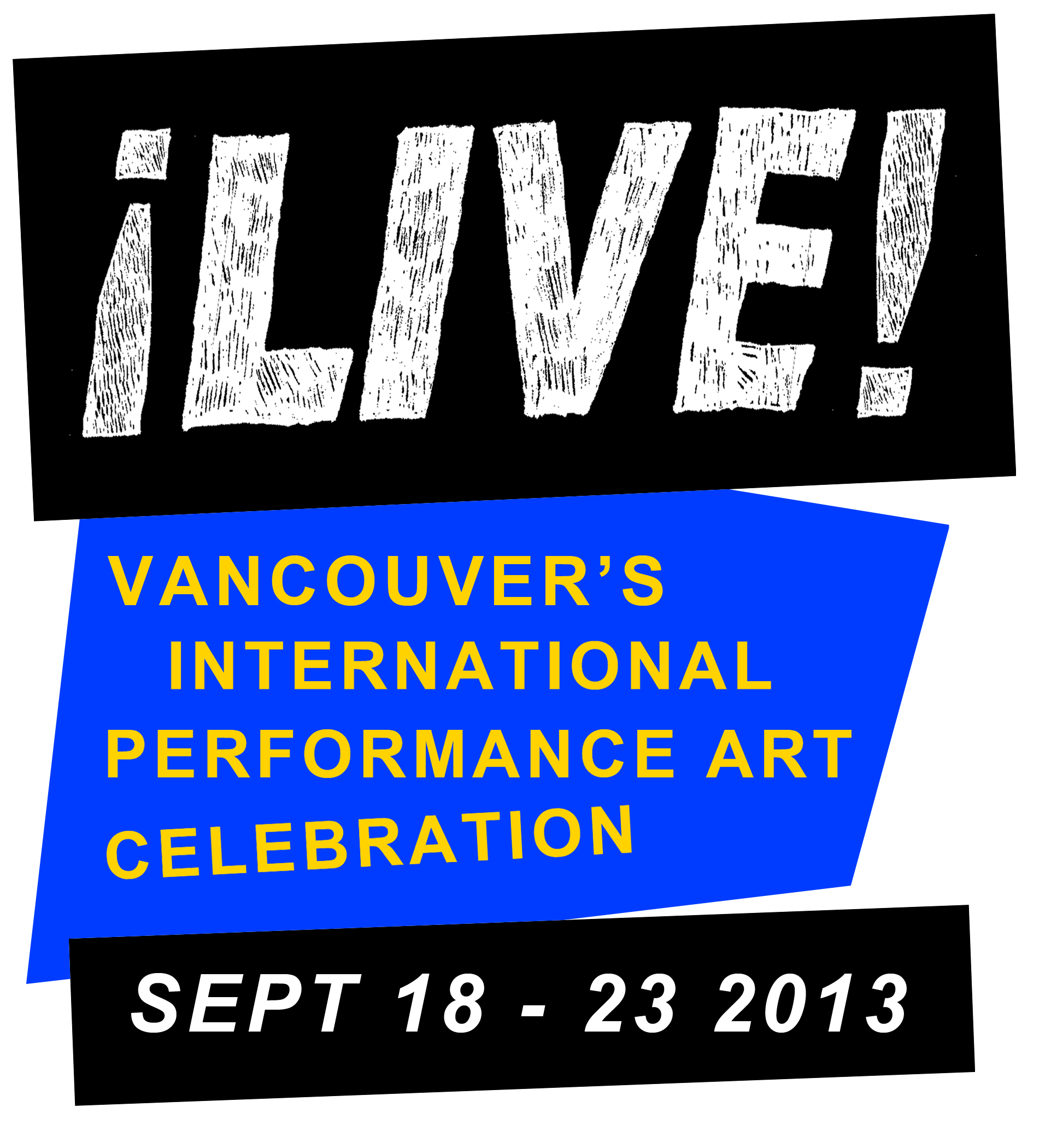Lin Yilin: Imagery Knowledge Science
 A crowd of at least fifty volunteers met up at Centre A for Lin Yilin’s site-specific performance piece Imagery Knowledge Science. Though I was told I would be totally safe and protected by the gallery staff, I could not help but feel a certain amount of trepidation for what we might encounter.
A crowd of at least fifty volunteers met up at Centre A for Lin Yilin’s site-specific performance piece Imagery Knowledge Science. Though I was told I would be totally safe and protected by the gallery staff, I could not help but feel a certain amount of trepidation for what we might encounter.
We were told that we would be following Lin down some nearby alleys to visit the old telephone poles. At each pole, one of us would read out the profile of a criminal: their height, weight, hair and eye colour, ethnicity, gender, distinctive markings, and so on. Then Lin would climb up a ladder to stick a tiny piece of paper into a crack in the pole. There were thirty-two poles to cover and we did not know what was on the paper. Centre A’s staff informed us there were drug users in these alleys whom we should respect and not photograph.
Following Lin, our group streamed out the door, accompanied by a bevy of community liaisons, traffic controllers, artist assistants, and documentarians for both still and video. Once outside, were were met by more performance enthusiasts and stopped for a quick photo opportunity underneath the gate of Chinatown. Our route would take us down an alley on Carrall St. running parallel between Pender and Hastings. Crossing over Columbia, we would meet a perpendicular alley, travel up towards Hastings, stopping at each pole before turning around and emerging on Pender St., just west of Main.
Our large group almost immediately attracts a police presence, who are easily persuaded that our intentions are artful and therefore harmless. Pretty much everyone else in the alley finds some other place to be.
At the first stop, as a criminal profile is being read, a tiny bird shit falls at Lin Yilin’s feet. At the next, as Lin searches for a crack in the pole, he drops the piece of paper he is hiding. It is yellow, with something grey printed on it. Someone tells me that on the yellow papers are tiny pictures of the people profiled, gathered from North America’s list of most wanted criminals.The first couple profiles are full of descriptions of scars, tattoos, deformities, and bullet marks. I read out one of the few descriptions of a woman:
Height : 5 feet 5 inches
Weight : 133 pounds
Hair : Brown
Eyes : Brown
Hispanic white female
Our slow procession is permeated by the smell of piss on asphalt, marked by a banana peel, dumpsters, pigeons, an abandoned television. Some of our group examine the graffiti plastered on a set of double doors. People take pictures of us from the balconies of some nice looking apartments. We pass the ruins of Vancouver’s first vaudeville theatre, the Pantages, peer in at the crumbed brick, the still-intact proscenium and peach-painted balcony adorned in gold. Some one tells me this space is slated to become another condo. Lin slips a paper in a pole that is also adorned with faded plastic flowers. What the flowers commemorates is mysterious.
The slow pace of our own gathering begins to take on the air of a memorial. In my mind, I liken the anonymous role call to the one given to fallen soldiers. I find myself wondering why the only deserving place to commemorate a criminal is a dirty and piss-soaked alley. My best answer is that this environment, this poverty, is what breeds so-called crime. Perhaps in this environment these profiles represent not soldiers, not criminals, but casualties. Casualties of poverty and also of the rapid development that is overtaking this city.
As we approach the intersection of two alleyways, there is a woman sitting next to a pole who does not want to move or be photographed. A great number of needles are scattered on the ground nearby. Our group discreetly skips this pole. As we pass she begins to moan. Another woman fiddles with a rig as she talks to a friend. With all our cameras, she wants us to take her picture. She tells us this is her space. A man holding a skateboard aggressively tells the crowd, “This is where people get shot, beaten, stabbed. This is where people get happy.” He asks what’s going on. I begin to tell him, but he walks away.
The intimidating size of our group is clearly an issue in this space. I recall that Lin Yilin had initially requested not fifty, but a hundred people for this piece. Of the people who habituate these alleys, a few join us to watch Li Yilin, however many have been surprised at our presence and are acting out. I cannot help but feel that we are embodying the gentrifying force that is rapidly changing this neighbourhood. No matter how mindful or respectful our intentions, the sheer size of our presence is forcing everyone else into change.
Our march concludes and we wander back to Centre A, returning to a familiar world. A class gathers in the library and begins to discuss the performance. People relax on the couches. We are left wondering what our role and the role of art is in the DTES. It is not a new question, but it is one that is perpetually discussed and perpetually unresolved in this city. Lin Yilin’s piece is a harsh but considered contribution to this dialogue.
– stacey ho
